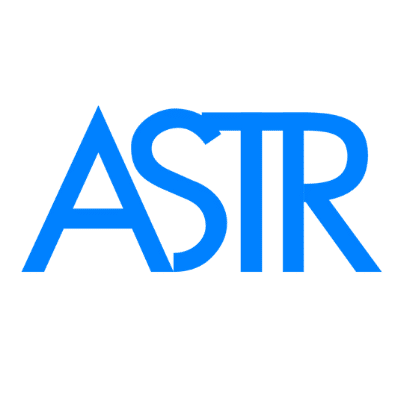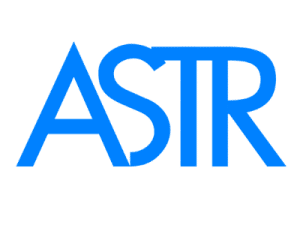Mediterranean vs. DASH vs. Vegetarian Diet: Which Is Best for Long-Term Health?
Mediterranean vs. DASH vs. Vegetarian Diet: Which Is Best for Long-Term Health?
Meta description: Confused about which diet to follow? Compare the Mediterranean, DASH, and Vegetarian diets based on scientific evidence—plus a safer, more complete alternative for healing and inflammation.
Which Diet Is Right for You? A Scientific Comparison
With so many diet plans available today, it can be overwhelming to determine which one actually supports long-term health. The Mediterranean, DASH, and Vegetarian diets are among the most researched approaches and are often promoted as heart-healthy. However, when it comes to reversing inflammation, restoring gut health, and addressing chronic fatigue or hormonal imbalance, each of these diets has limitations.
This article explores the science behind each of these popular diets and introduces a more comprehensive approach—the ASTR Diet—developed by Dr. Joseph Jacobs, Doctor of Physical Therapy and cancer survivor.
1. The Mediterranean Diet
Overview:
This diet is inspired by the traditional eating habits of countries along the Mediterranean Sea. It emphasizes vegetables, fruits, legumes, olive oil, nuts, whole grains, and moderate amounts of fish and dairy.
Scientific Benefits:
Research shows the Mediterranean diet may reduce the risk of cardiovascular disease, improve brain function, and support longevity. A large randomized trial found that adherence to this diet reduced the incidence of major cardiovascular events in high-risk individuals (Estruch et al., 2013). Additional studies associate it with lower rates of neurodegenerative diseases and metabolic syndrome (Sofi et al., 2010).
Limitations:
This diet often includes wine, which has been linked to an increased cancer risk, even in small amounts (LoConte et al., 2018). Many versions rely heavily on high-carbohydrate foods such as bread and pasta, which can increase blood sugar and inflammation in sensitive individuals.
2. The DASH Diet
Overview:
DASH, or Dietary Approaches to Stop Hypertension, was designed to lower high blood pressure. It emphasizes fruits, vegetables, whole grains, low-fat dairy, lean meats, and a reduction in sodium intake.
Scientific Benefits:
Numerous studies confirm its ability to reduce systolic and diastolic blood pressure (Sacks et al., 2001). It also improves cholesterol profiles and is often recommended by cardiologists for patients with hypertension (Blumenthal et al., 2010).
Limitations:
While it promotes more fiber and potassium, it includes daily servings of dairy, which may be inflammatory for some individuals. It does not address food quality or environmental toxin exposure, and the inclusion of processed whole grain products and low-fat processed items may limit its anti-inflammatory potential.
3. The Vegetarian Diet
Overview:
A vegetarian diet excludes meat but may include dairy, eggs, and processed plant-based foods depending on the variation. While it appears plant-focused, its quality can vary significantly.
Scientific Benefits:
Vegetarian diets are associated with lower body mass index, reduced LDL cholesterol, and decreased risk of ischemic heart disease (Dinu et al., 2017). Studies also indicate a reduced risk of certain cancers, particularly colorectal cancer, when red and processed meats are excluded (Tantamango-Bartley et al., 2013).
Limitations:
Vegetarian diets can be high in refined grains, sugars, and omega-6-rich vegetable oils. Nutrient deficiencies in vitamin B12, iron, zinc, and omega-3 fatty acids are common, especially in individuals who do not carefully plan their intake (Craig, 2009). The diet is not inherently anti-inflammatory and can be harmful if it relies heavily on processed foods.
A More Complete Option: The ASTR Diet
The ASTR Diet is detailed in the book Eat to Heal by Dr. Joseph Jacobs, who developed the approach after his own experience overcoming cancer, chronic fatigue, and persistent pain. He became frustrated with popular diets that worsened his symptoms and set out to create a plan that targets the root causes of illness.
What Makes the ASTR Diet Different:
The ASTR Diet is built around four pillars: anti-inflammatory foods, sustainable choices, toxin-free ingredients, and restorative healing. It includes nutrient-dense whole foods, eliminates refined sugars and grains, avoids inflammatory oils, and supports gut and hormonal health through intermittent fasting, fiber-rich plants, and clean proteins. Unlike other diets, it emphasizes food quality and environmental toxin reduction as part of its healing protocol.
Scientific Rationale:
Chronic inflammation is linked to nearly all major diseases including diabetes, heart disease, autoimmune conditions, and cancer (Furman et al., 2019). The ASTR Diet targets this inflammation by eliminating common dietary triggers. Research also supports that reducing exposure to endocrine-disrupting chemicals and increasing intake of antioxidants can significantly improve health outcomes (Heindel et al., 2017; Grosso et al., 2017).
Side-by-Side Comparison
| Diet | Strengths | Weaknesses |
|---|---|---|
| Mediterranean | Cardiovascular protection, longevity | May include alcohol and high sugar intake |
| DASH | Blood pressure and cholesterol improvements | Includes dairy and processed grains |
| Vegetarian | Lower heart disease and cancer risk | Nutrient deficiencies and potential inflammation |
| ASTR Diet | Root-cause healing, anti-inflammatory, nutrient-rich | Requires higher food quality and intentional planning |
Take the Next Step Toward Healing
If you’re tired of following diets that fail to resolve the root causes of fatigue, inflammation, or chronic illness, it’s time to explore a more personalized and science-based option.
Start by reading the book Eat to Heal and claim your free consultation with an ASTR Diet health coach to create a plan tailored to your body’s healing needs:
👉 Schedule your free session here
הפניות
-
Blumenthal, J. A., Babyak, M. A., Sherwood, A., et al. (2010). Effects of the DASH diet alone and in combination with exercise and weight loss on blood pressure and cardiovascular biomarkers in men and women with high blood pressure. Archives of Internal Medicine, 170(2), 126–135. https://doi.org/10.1001/archinternmed.2009.470
-
Craig, W. J. (2009). Health effects of vegan and vegetarian diets. Proceedings of the Nutrition Society, 68(1), 61–67. https://doi.org/10.1017/S002966510800888X
-
Dinu, M., Abbate, R., Gensini, G. F., Casini, A., & Sofi, F. (2017). Vegetarian, vegan diets and multiple health outcomes: A systematic review with meta-analysis of observational studies. Critical Reviews in Food Science and Nutrition, 57(17), 3640–3649. https://doi.org/10.1080/10408398.2016.1138447
-
Estruch, R., Ros, E., Salas-Salvadó, J., et al. (2013). Primary prevention of cardiovascular disease with a Mediterranean diet. New England Journal of Medicine, 368(14), 1279–1290. https://doi.org/10.1056/NEJMoa1200303
-
Furman, D., Campisi, J., Verdin, E., et al. (2019). Chronic inflammation in the etiology of disease across the life span. Nature Medicine, 25, 1822–1832. https://doi.org/10.1038/s41591-019-0675-0
-
Grosso, G., Bella, F., Godos, J., et al. (2017). Possible role of diet in cancer: Systematic review and multiple meta-analyses of dietary patterns, lifestyle factors, and cancer risk. Nutrition Reviews, 75(6), 405–419. https://doi.org/10.1093/nutrit/nux012
-
Heindel, J. J., Newbold, R., Schug, T. T. (2017). Endocrine disruptors and obesity. Nature Reviews Endocrinology, 11(11), 653–661. https://doi.org/10.1038/nrendo.2015.163
-
LoConte, N. K., Brewster, A. M., Kaur, J. S., Merrill, J. K., & Alberg, A. J. (2018). Alcohol and cancer: A statement of the American Society of Clinical Oncology. Journal of Clinical Oncology, 36(1), 83–93. https://doi.org/10.1200/JCO.2017.76.1155
-
Sacks, F. M., Svetkey, L. P., Vollmer, W. M., et al. (2001). Effects on blood pressure of reduced dietary sodium and the Dietary Approaches to Stop Hypertension (DASH) diet. New England Journal of Medicine, 344(1), 3–10. https://doi.org/10.1056/NEJM200101043440101
-
Sofi, F., Cesari, F., Abbate, R., Gensini, G. F., & Casini, A. (2010). Adherence to Mediterranean diet and health status: Meta-analysis. BMJ, 337, a1344. https://doi.org/10.1136/bmj.a1344
-
Tantamango-Bartley, Y., Jaceldo-Siegl, K., Fan, J., & Fraser, G. (2013). Vegetarian diets and the incidence of cancer in a low-risk population. Cancer Epidemiology, Biomarkers & Prevention, 22(2), 286–294. https://doi.org/10.1158/1055-9965.EPI-12-1060

